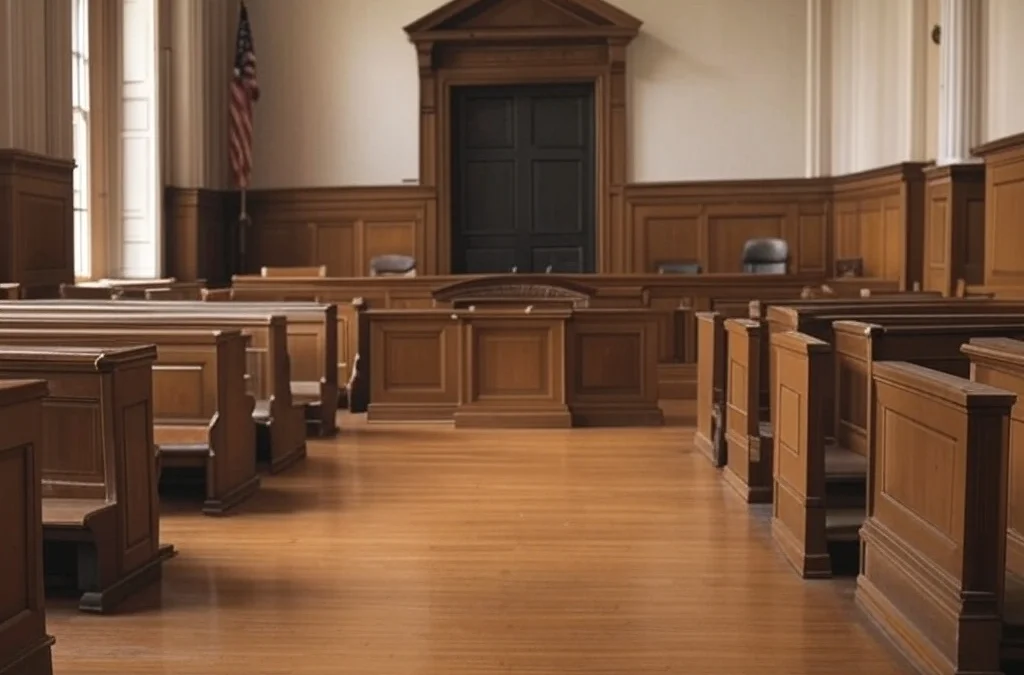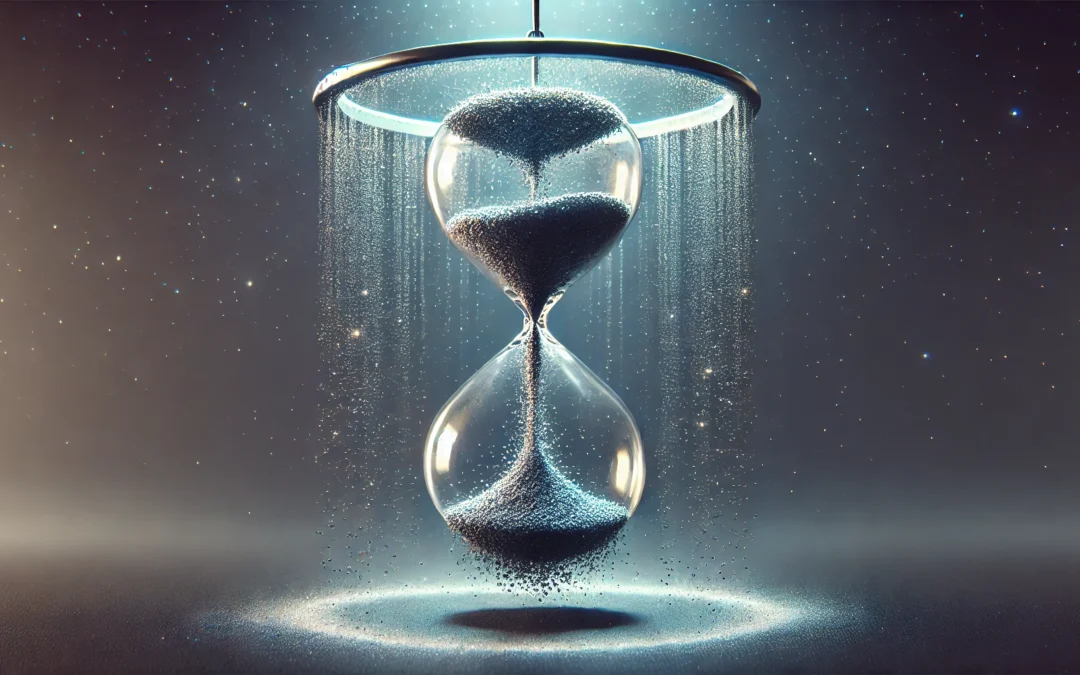Time is something we all experience, yet it can feel like a mystery. Have you ever noticed how a minute can fly by when you’re having fun, but drag on forever in a boring meeting? This curious nature of time affects us all, shaping our days and influencing our lives in countless ways. From the ticking of a clock to the changing of seasons, time is always moving, and we are constantly trying to keep up. It’s a part of our everyday life, guiding us through schedules, deadlines, and memorable moments.
In this article, we’re going to explore 20 different examples of time, each showing how it impacts us and the world around us. Whether it’s the precise timing of a sports event or the ancient rhythms of nature, each example offers a unique perspective on how time works. You’ll find familiar scenarios that resonate with your own experiences, as well as fascinating facts that might surprise you. By looking at these examples, we can gain a deeper appreciation for how time plays a role in everything we do. So, let’s take a closer look at the many faces of time and see what we can discover.
Understanding the Concept of Time
Time is a fundamental and multidimensional concept that plays a crucial role in our understanding of the universe. It can be described as the continuous progression of existence and events that occur in an irreversible sequence from the past, through the present, and into the future. In essence, time is what allows us to perceive change and motion, providing a framework for organizing and understanding the world around us.
From a scientific perspective, time is often considered the fourth dimension, complementing the three spatial dimensions. This is a cornerstone of the theory of relativity proposed by Albert Einstein, which suggests that time is not absolute but is relative and can vary depending on factors such as speed and gravity. In this context, time is intertwined with space to form a unified entity known as spacetime.
Time is measured using units such as seconds, minutes, and hours, which are standardized to provide consistency and accuracy in various activities, from daily routines to scientific research. Clocks and calendars are tools that help us quantify and keep track of time, allowing us to schedule events, plan for the future, and reflect on the past.
Philosophically, time has been a subject of contemplation and debate for centuries. Different cultures and thinkers have various interpretations of time, ranging from linear to cyclical perceptions. Some consider it a mere construct of human consciousness, while others view it as an intrinsic aspect of the universe.
In everyday life, time influences nearly every aspect of our existence. It dictates the rhythm of natural phenomena, such as the changing seasons and the cycle of day and night. It also governs human activities, from work schedules to personal milestones, and is crucial for maintaining order and structure in society.
In summary, time is a complex and essential concept that shapes our understanding of reality. It is both a measurable quantity and a profound philosophical idea, influencing everything from the laws of physics to the way we experience our lives. Understanding time helps us navigate the world, plan for the future, and appreciate the fleeting nature of the present.
The Best Examples of Time
1. Sunrise and Sunset
Sunrise and sunset are daily reminders of time’s passage. Each morning, the sun rises, bringing light and signaling the start of a new day. In the evening, it sets, marking the day’s end. These natural events help us measure time in a very visual and rhythmic way, connecting us to the natural cycle of day and night.
2. A Clock Ticking
The steady tick-tock of a clock is a constant reminder of time moving forward. Each tick represents a second passing, a tiny fraction of our day slipping away. Clocks help us organize our lives, keeping us on schedule and reminding us that time is always in motion.
3. Changing Seasons
The transition from one season to another is a powerful example of time’s progression. Spring brings new growth, summer offers warmth, autumn showcases vibrant colors, and winter provides a quiet, cold respite. Each season’s unique characteristics remind us of time’s cyclical nature and its impact on our environment.
4. Aging
Aging is a profound illustration of time’s effect on living beings. As we grow older, our bodies change, and our experiences accumulate. These physical and mental transformations are a personal testament to the passage of time, showcasing its irreversible and continuous nature.
5. Historical Landmarks
Historical landmarks, like ancient ruins or monuments, tell stories of times long past. They stand as witnesses to history, preserving memories of events and cultures that have shaped the world. These structures remind us of time’s ability to preserve the past while continuously moving forward.
6. A Sand Timer
A sand timer, or hourglass, is a simple yet effective representation of time. As sand flows from one chamber to another, it visually depicts the passage of a fixed period. It’s a tangible way to grasp the concept of time slipping away, grain by grain, minute by minute.
7. A Baby’s Growth
Watching a baby grow is a beautiful example of time’s impact on life. From the first smile to the first step, each milestone marks the passage of time. The rapid development in the early years highlights how time influences physical and cognitive growth in profound ways.
8. A Calendar
A calendar helps us organize and plan our lives, breaking time into manageable units. It marks important dates, holidays, and events, providing a framework for our activities. By flipping through its pages, we see the year unfold, month by month, reminding us of time’s relentless march.
9. Erosion of Rocks
Erosion is a slow process that demonstrates time’s power over the natural world. Over centuries, water, wind, and ice wear down rocks, shaping landscapes and creating features like canyons and valleys. This gradual transformation showcases time’s ability to alter even the most solid and enduring materials.
10. Technological Advancements
The rapid pace of technological advancements highlights time’s role in progress and innovation. From the invention of the wheel to the development of smartphones, each breakthrough marks a point in time where human ingenuity has leaped forward. This progress reflects how time fosters change and evolution in society.
11. The Growth of a Tree
The life of a tree is a quiet reflection of time’s steady march. From the moment a seed touches the soil, its growth tells a silent story. Each ring hidden within its trunk captures a memory of seasons gone by, showcasing how time shapes life in small, consistent steps.
12. The Evolution of Language
Language constantly shifts, reflecting the way people adapt and change. Words are born, others vanish, and meanings evolve. These changes trace back to time’s influence on culture, showing how communication grows along with the world it inhabits.
13. The Melting of Glaciers
Massive glaciers have stood for thousands of years, yet they are not eternal. Over time, their ice slowly retreats, reshaping landscapes. Their melt reminds us that even the most enduring forms of nature are subject to the passage of time.
14. The Lifecycle of a Butterfly
The journey of a butterfly from egg to adult is a vivid example of nature’s clock at work. Each stage of its life unfolds in its own time, reminding us that transformation and growth require patience. It’s a great example of time’s connection to change.
15. The Development of a City
Cities don’t spring up overnight. What begins as a humble settlement grows into a thriving hub of activity. Roads expand, buildings rise, and populations surge, each step marking the unfolding story of time’s influence on human progress.
16. The Aging of Wine
Wine’s character deepens as time passes. Stored in barrels or bottles, it undergoes chemical changes that enhance its aroma and flavor. Time is not just a factor – it’s the secret ingredient that turns good wine into something extraordinary.
17. The Decay of Organic Matter
Over time, fallen leaves and other organic material break down, enriching the soil for new growth. This natural process of decomposition highlights how time recycles life. It’s a quiet but powerful reminder of the endless loop of renewal.
18. The Journey of a River
A river’s path is a testament to time’s persistence. From its source to its meeting with the sea, it carves through earth and rock, shaping the landscape. Each bend and curve speaks to years of relentless flow, revealing the patience of nature.
19. The Formation of Mountains
Mountains don’t appear overnight – they rise over millions of years. Tectonic forces push them skyward, while erosion reshapes their slopes. These towering landmarks are the result of vast stretches of time, holding the history of Earth in their peaks.
20. The Aging of Cheese
Cheese transforms as it sits, becoming richer and more complex with each passing day. Whether aged for weeks or years, time allows its flavors to deepen. This slow evolution showcases how patience can elevate something simple into something extraordinary.
The Importance of Time
Time is one of the most valuable resources we have. It shapes our days, defines our goals, and determines how much we can achieve in a lifetime. Unlike money or material things, time cannot be earned back once it’s gone. This makes it incredibly important to use it wisely.
For success in any area of life, managing time is essential. Setting priorities helps us focus on what matters most, whether it’s personal growth, career goals, or spending time with loved ones. Procrastination often robs us of opportunities, while good time management can open doors to accomplishments we didn’t think were possible.
Time also teaches us patience. Some of life’s best rewards, like personal achievements or meaningful relationships, take time to develop. Learning to wait and trust the process can make us more resilient and help us appreciate the results even more.
Beyond personal success, time affects how we connect with others. Sharing time with friends and family strengthens bonds and creates lasting memories. Neglecting these moments can lead to regret, reminding us that time spent on relationships is never wasted.
In the end, how we value time reflects how we value our own lives. Recognizing its importance can inspire us to use each moment wisely and build a life filled with purpose and fulfillment.
Understanding Time Through Cultural Lenses
Time is a universal concept, yet its perception and significance can vary dramatically across different cultures. These cultural differences enrich our understanding of time and provide diverse perspectives on how it shapes human experiences.
In Western cultures, time is often viewed linearly. It’s like a straight path, where events are sequential and progress is measured by moving forward. This perspective influences everything from business practices to personal planning, emphasizing efficiency and punctuality. For example, meetings are scheduled precisely, and deadlines are strictly adhered to. This linear view supports a future-oriented mindset, where goals and achievements are prioritized.
In contrast, many Eastern cultures perceive time as more cyclical. This cyclical view is evident in practices like meditation and festivals that celebrate the cycles of nature and life. The emphasis is on harmony and balance, with a focus on the present moment. In these cultures, the past and future are interconnected with the present, leading to a more holistic approach to decision-making and life in general.
Additionally, some indigenous cultures have unique interpretations of time that are deeply intertwined with their environmental and spiritual connections. For instance, the concept of time among the Hopi people of North America is not segmented into past, present, and future. Instead, it’s experienced as a single, unfolding reality, where events are part of a greater spiritual continuum.
These cultural lenses offer valuable insights into how we can approach time management, personal growth, and relationships. By understanding these different perspectives, we can appreciate the diversity of human experience and perhaps find new ways to relate to time in our own lives. Embracing these varied views can lead to greater empathy and a richer understanding of our global society.
The Concept of Time in Physics
Time is one of the most intriguing concepts in physics, central to how we understand the universe. It’s often referred to as the fourth dimension, existing alongside the three dimensions of space. While space gives us the “where,” time gives us the “when,” allowing us to map out events and understand their sequence.
In classical physics, time was thought to be absolute – a constant ticking clock that moved the same way for everyone, everywhere. This idea dominated for centuries until Albert Einstein revolutionized it with his theory of relativity. Einstein showed that time is not fixed. Instead, it can stretch, compress, and behave differently depending on factors like speed and gravity.
This phenomenon, called time dilation, is more than a theoretical idea. It’s something we can observe and measure. For instance, astronauts aboard the International Space Station age just a tiny bit more slowly than people on Earth. Their higher speed and reduced exposure to Earth’s gravity alter the way time flows for them, even if the effect is minuscule.
Relativity also plays a crucial role in technology we use every day. Global Positioning System (GPS) satellites, for example, orbit Earth at high speeds and experience less gravitational pull. Engineers must account for these relativistic effects to ensure GPS signals are accurate. Without this correction, your navigation apps would quickly lose precision, leading to errors in location data.
Time’s behavior in physics reminds us that what feels constant in daily life is, in fact, deeply dynamic and relative. It’s not just a ticking clock; it’s an integral part of the universe, shaping everything from cosmic events to the way we find our way home.
The Psychological Perception of Time
Time is not just a series of ticks on a clock; it’s also a mental construct. Humans perceive time in diverse ways. For some, time flies during joyful moments, while it drags during tedious tasks. This subjective experience is influenced by various factors such as age, culture, and even emotions. Children often feel that time moves slowly because they are constantly learning and experiencing new things. In contrast, adults may feel that time speeds up as they grow older, partly because of routine and familiarity.
Cultural differences shape how we perceive and value time. In some cultures, punctuality is crucial, while in others, a more relaxed approach is common. This can affect everything from business interactions to daily life. Our emotions also play a significant role. Anxiety can make time seem to stretch endlessly, whereas excitement can condense it into fleeting moments. Understanding these perceptions can improve personal planning and enhance empathy in social interactions.
Time in Technology and Innovation
Technology has drastically altered our relationship with time. The rise of digital tools and devices has made time management easier, yet more complex. In the past, tasks that took hours can now be completed in minutes with the help of computers and smartphones. Automation and artificial intelligence are further changing the landscape, allowing businesses to operate 24/7 and people to engage in activities across different time zones seamlessly. This has created a world where time seems to blur, with constant connectivity making it hard to switch off.
However, this constant connectivity can lead to a sense of time scarcity. People often feel they don’t have enough time, despite technological advancements. There’s a paradox here. Technology promises efficiency but can also lead to an overload of information and distractions. Finding balance is key. Using technology mindfully can help us reclaim time for what truly matters, whether it’s work, hobbies, or spending time with loved ones. Time, in this context, becomes a resource to manage wisely, not just a measure to track.
Read also: 20 Examples of Consciousness & Definition
The Most Popular on BitGlint

20 Examples of Secondary Consumers in the Food Chain
Secondary consumers are animals that eat other animals—usually herbivores that feed on plants. They’re an important...

60 Things That are Unpredictable
No matter how much we plan, life has a way of surprising us. Some things follow a routine, but others can change in an...

30 Moral Reasoning Examples & Definition
Moral reasoning is something most people use every day, often without even realizing it. It’s the thought process...

50 Examples of Square Things
Square things are part of everyday life, even if we don’t always think about them. From objects we use at home to...

20 Chronology Examples & Meaning
Chronology is something we use more than we realize. It shows up in conversations, in how we remember the past, and in...

50 Contrast Examples in Life, Art & Literature
We notice contrast all the time, even if we don’t think about it. It's there when the sky shifts from light to dark....

30 Wishful Thinking Examples & Meaning
Wishful thinking is something we all do at some point. You hope things will turn out fine—even if there’s no real...
Get Inspired with BitGlint
The Latest
30 Satisfaction Examples & Meaning
Satisfaction is a feeling everyone knows but may find hard to describe clearly. It’s the quiet relief you get after finishing a tough job, the warmth you feel when spending quality time with loved ones, or even the simple comfort of eating a good meal when you're...

30 Oversimplification Examples & What it Means
Oversimplification is everywhere. You've probably encountered it many times - on social media, in casual conversations, and even in the news. But what exactly is oversimplification, and why should you care? Simply put, oversimplification happens when complex issues...
20 Examples of Gravity & What Gravity Really Is
Gravity is one of the most important forces in the universe, but many people don’t fully understand what it really is or how it works. We all experience gravity every day - when we walk, when something drops, or when we simply sit in a chair. But there’s much more to...
10 Biggest Ethical Theories: A Comprehensive Guide
Ethical theories are the bedrock of moral philosophy, serving as the guiding principles that help us navigate the complex landscape of right and wrong. In this comprehensive guide, we delve into the ten most prominent ethical theories, shedding light on their origins,...

